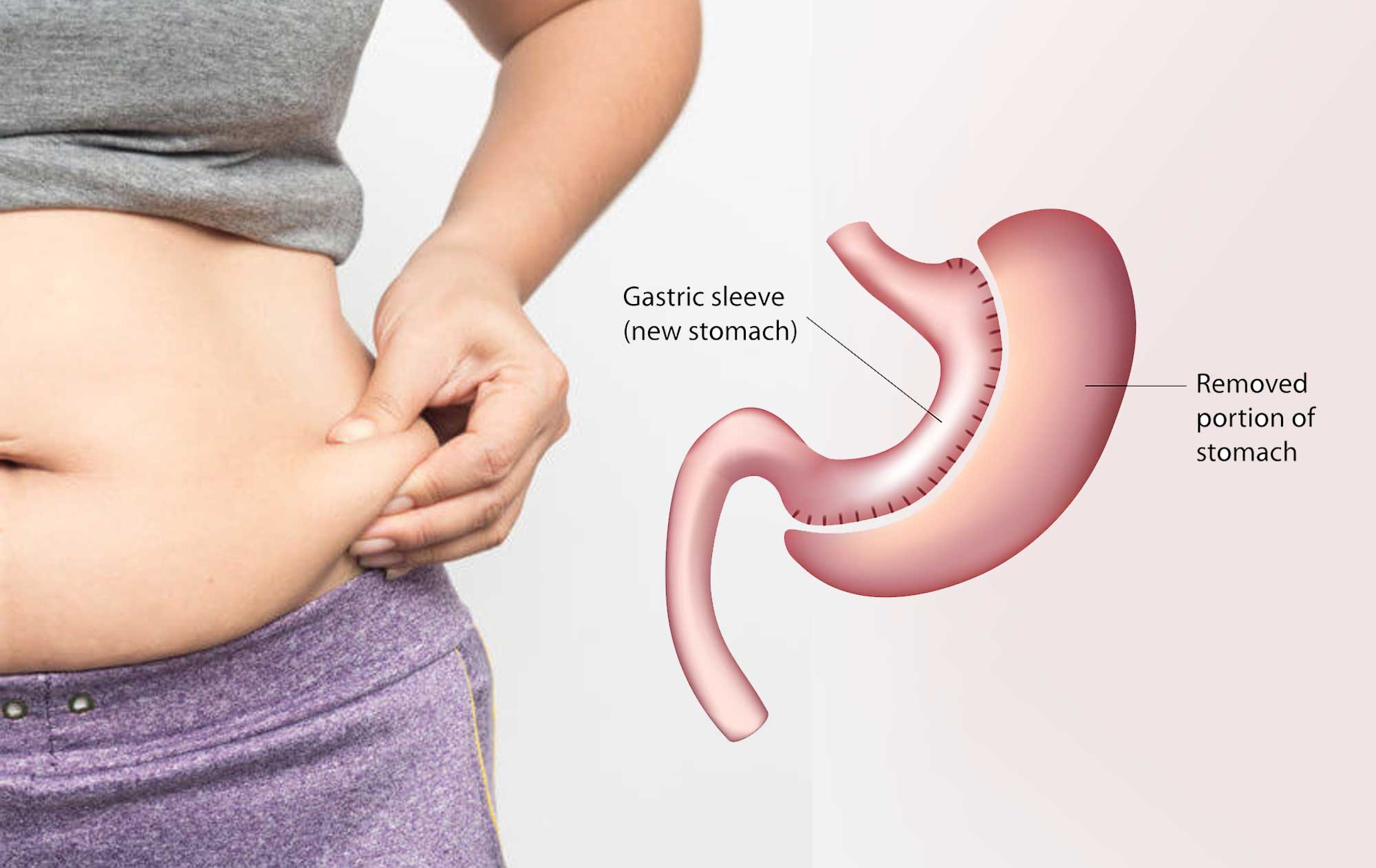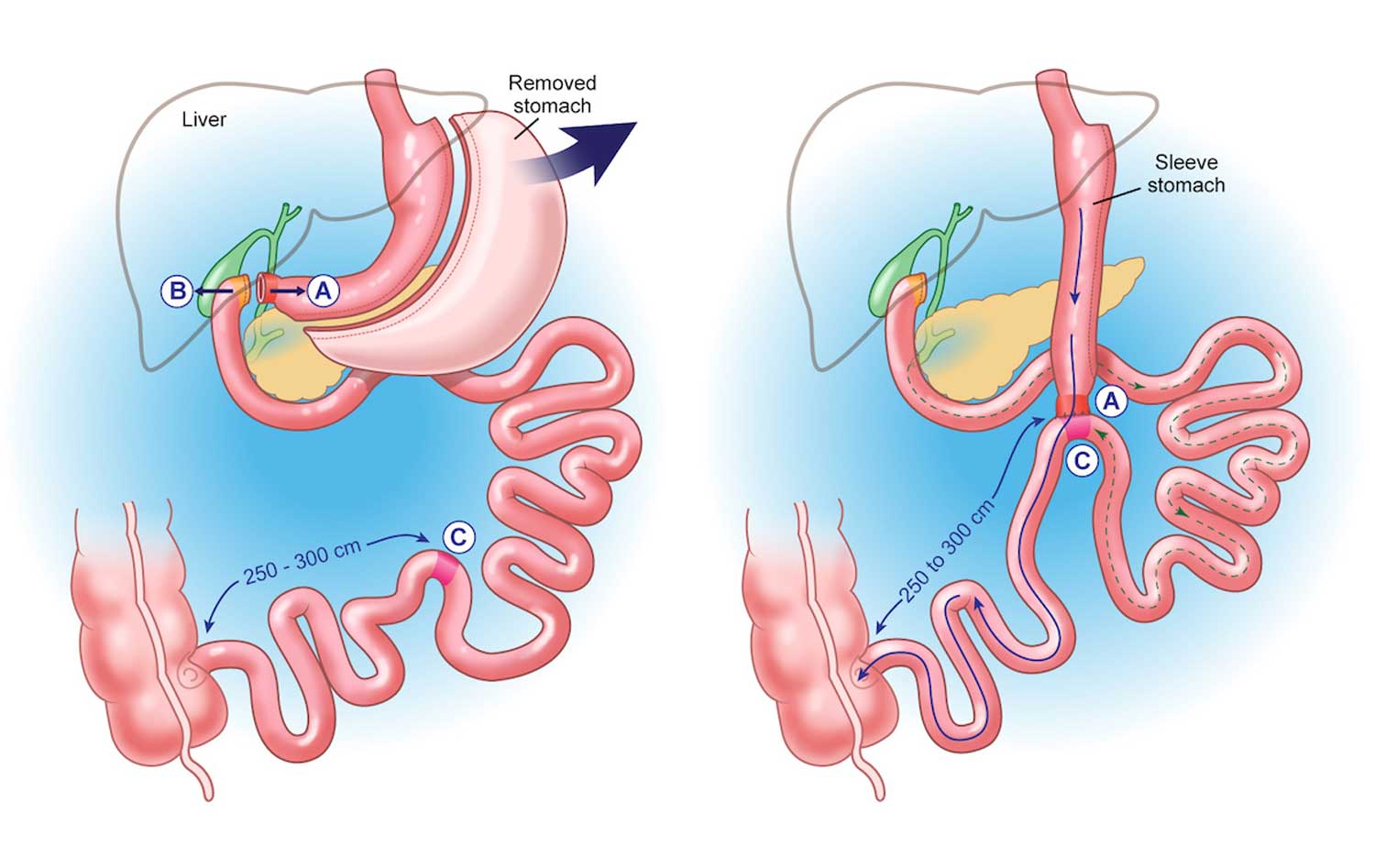
Sleeve Gastrectomy surgery is a restrictive surgical procedure. It is restrictive in the sense that it “restricts” how much food the stomach can hold.
Patients with excessively high BMI’s (over 55), are at increased risk for Bariatric surgery. Therefore, your surgeon may recommend performing the sleeve gastrectomy as the first part of a two-part surgery. This enables the patient to lose weight for the first year prior to the second surgery where bypass is performed to assist the patient with the remaining weight loss. Because the patient loses weight from the sleeve gastrectomy, there is less risk associated with the second surgery to do the bypass. Highly motivated patients may not require the second stage of surgery if adequate weight loss is achieved by sleeve gastrectomy alone.
In a sleeve gastrectomy surgery, the left side of the stomach is removed leaving a smaller sleeve or tube that is shaped like a banana. This surgery is performed laparoscopically and involves stapling of the stomach upon removal of the left side of the stomach.
Advantages of Sleeve Gastrectomy Surgery
- Reduced stomach volume increases feeling of fullness
- Stomach functions normally allowing most foods to be eaten, just in smaller amounts
- Stomach portion that produces hunger stimulating hormone (Ghrelin) is removed
- No dumping syndrome due to pyloric portion of stomach is left intact
- No intestinal bypass and its associated risks
- Can be performed laparoscopically
- Simpler procedure than gastric bypass
- Safer first stage procedure of two stage surgery for super morbidly obese
- Less operative time than bypass surgeries
- Less hospital stay than bypass surgeries
- No foreign bodies used such as in band surgery
Disadvantages of Sleeve Gastrectomy Surgery
- Potential is higher for inadequate weight loss or weight regain compared to intestinal bypass surgeries.
- Irreversible
- Considered investigational by some surgeons and insurance companies
- Considered a temporary treatment for obesity unless second stage (bypass) is performed
- Potential for dilation of the sleeve affecting weight loss
- Long term results have not been evaluated
Risks & Complications
- DVT (blood clot in the deep leg veins)
- Damage to adjacent organs
- Leakage of digestive contents from the staple line can lead to serious infection



